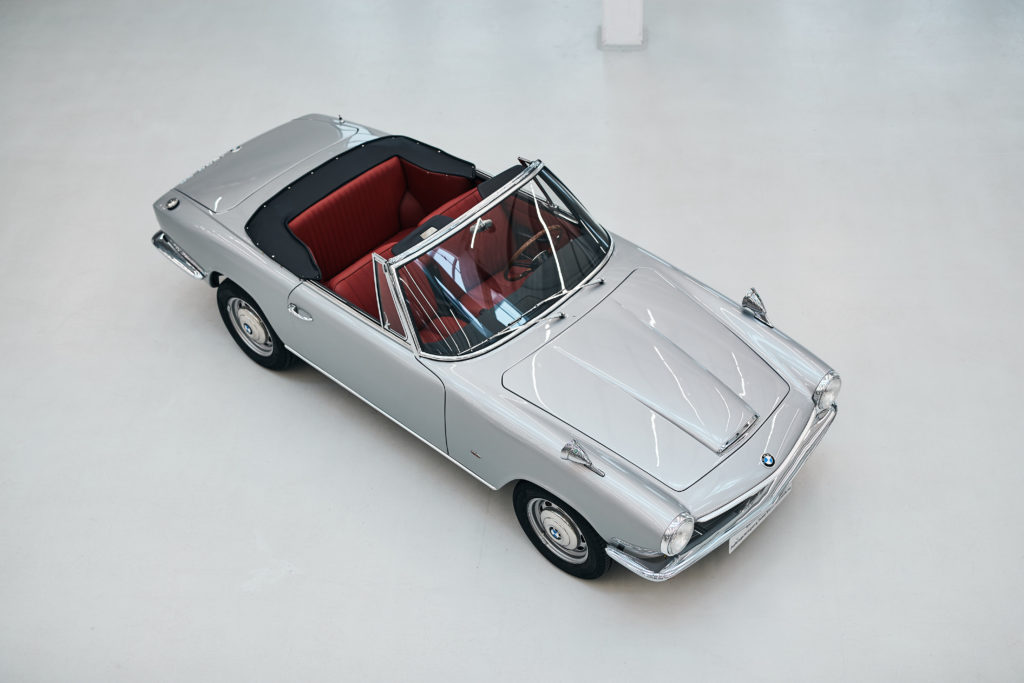BMW apprentices at Plant Dingolfing who aspire to work in body and vehicle construction have just completed a rather impressive project: restoration of the only remaining 1600 GT convertible. Better known as the Glas GT, a little-known German coupe with Italian styling by Pietro Frua, these cars are rare today, and rarer still are those which wear BMW kidney grilles and the 1600 GT badge from the final model years of 1967 and 1968.
It’s said that just two convertible prototypes were commissioned by Frua, and that both left the factory in Dingolfing, Germany, during the fall of 1967. The first example was soon wrecked during road testing and subsequently scrapped, while the second went on to find its way into the private stable of BMW majority shareholder Herbert Quandt. It remained under the same family ownership for some time, but was eventually sold off to a string of other private individuals which included a Munich-based fashion model and a businessman from Franconia, Germany.
Now owned by the Allianz Centre for Engineering in Munich, Germany, major restoration work was carried out with the purpose of preserving the almost-one-off convertible for posterity. Photos of the car’s original state are not provided, but a quick web search reveals that it had been kept up through the years. The original design of the Glas GT coupe, which would become the BMW 1600GT when it received the 1,573-cc engine of the BMW 1600Ti, was by Pietro Frua. An Italian designer with what what would become a wide-ranging library of designs, some of his other products included the Maserati A6G coupe, Mistral and Kyalami, AC Frua, and the little-known German-made but American-powered Bitter CD among quite a few more, like the Volvo P1800 which is widely credited to him.
Italian influence on the 1600GT is plentiful in terms of the visuals especially when viewing things from the rear, while period BMW touches are also present, like the narrow kidney grilles and round taillights. Fender mirrors are an interesting touch, although previous photos show the car wearing blue paint and a dark blue convertible top, the current combination of silver with red fabric seems even more suited to the shape.
The interior contains more red, this time taking the form of rich leather upholstery on the seats and door panels. Things are also distinctly different from BMWs of the same period in a number of ways, thanks to the original Glas styling having been retained with the 1600GT after BMW absorbed its Munich-based plant.
The engine is the same 1.6-liter displacement M10 (originally M116) used in the 1600Ti. Twin Solex 40PHH carburetors prepare the fuel-air mixture, and help the single-cam four develop 105 hp at 6,000 rpm and 104 pound-feet at 4,500.
Not long after celebrating its 51st birthday, the only 1600GT convertible remaining in any form or condition was registered for just the second time since new, this time wearing a fresh and professionally executed restoration. It will soon be delivered to BMW Group Classic, where it will join the ranks of other impressive and rare cars important to the history of the marque, a place it is sure to fit in well.—Alex Tock
[Photos courtesy BMW AG.]
